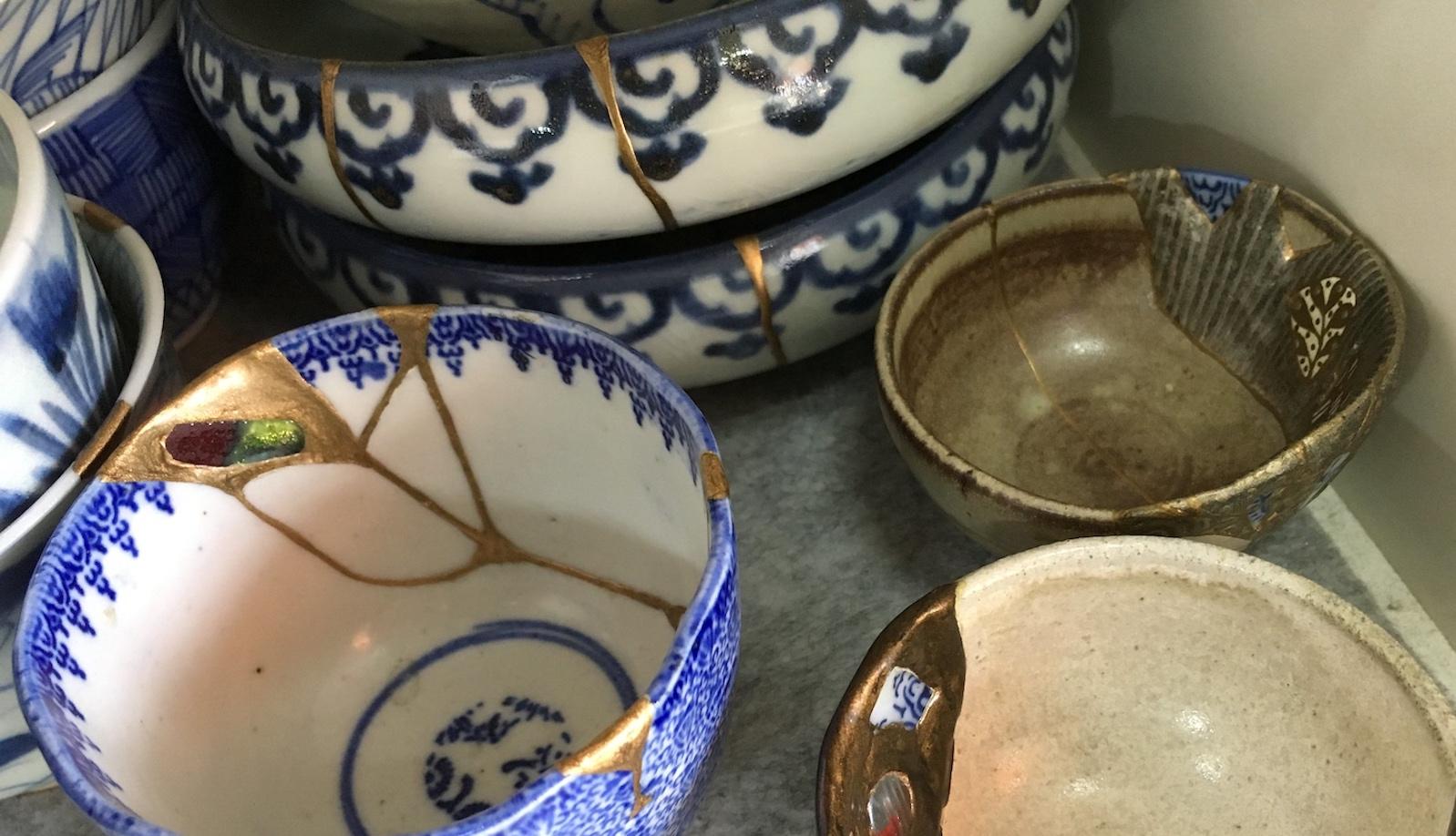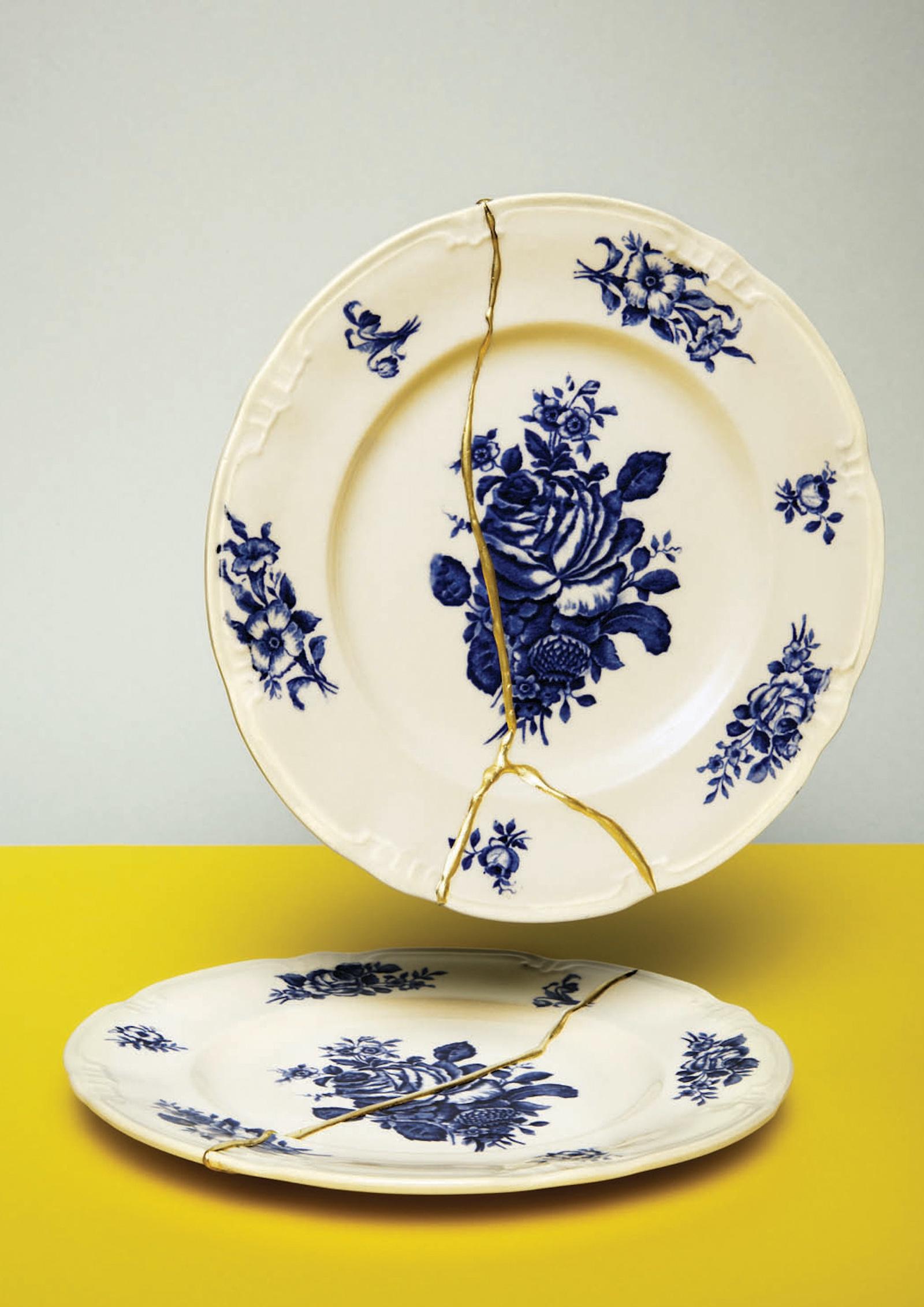
Detail of kintsugi workshop.
Kintsugi, the more commonly known term for kintsukuroi, describes the process of mending broken pottery with golden, sometimes silver, lacquer. Derived from the small Japanese words kin meaning golden, and tsugi meaning joining, kintsugi is fundamentally about ‘beautifully mending a broken thing.’
It is this precise ethos that has made kintsugi so popular of late. Though results are fragile and empty, this could be your silver, or rather gold, lining.
Sometime before the fifteenth century, Japanese citizens were known to cherish their ornate, but fragile, ceramics. Still, it was commonplace for these thin and delicate pieces to crack, so pottery owners would throw away the shattered vases, pots, and cups.
While there is no clear inventor of kintsugi, many acknowledge the story of the eighth shogun, Ashikaga Yoshimasa who allegedly sent one of his broken pottery pieces to China for repair. In return, he received his beloved bowl restored with large staples that were not pleasing to the eye. This encouraged him to send it off to a Japanese craftsman who might find a more desirable method of mending the pottery. Yoshimasa and his determination to prioritize aesthetics are said to have enacted the long-standing tradition of pottery-mending with gold that a great number of people around the world practice to this day.
By the sixteenth century, Japanese citizens began to mend their fractured pottery. Instead of using something similar to our modern, clear-drying glue, the pieces were sealed with lacquer—a glue produced from the sap of a tree indigenous to Japan.

Display of the Bison Kintsugi Technique by Lotte Dekker.
Also known as urushi, lacquer has been instrumental in many forms of Japanese art dating back to the prehistoric Jomon period. Urushi is considered to be incredibly precious; the only way to acquire it is by chopping down the tree from which the receiver intends to extract a single cup of sap.
Japanese artists often view the sap of the tree as its blood—and taking this sap to create urushi inevitably ends the life of the tree. Therefore, this glue is only meant to be produced for the most vetted, and valued purposes. It is also seen as a magnificent way for the artist to work with nature and express their ultimate gratitude for the provision of this majestic material in creating dazzling and meaningful pieces of art.
Most often, kintsugi is used to repair pieces of pottery that hold a significant sentimental value. It is not uncommon to find pottery with kintsugi that has been inherited or passed down for many generations. The process of restoring each pottery piece can take up to three months—the first layer of lacquer must be completely hardened before it can be dusted with gold or silver. This simple, yet therapeutic practice removes the need to hide imperfection and rather catalyzes a movement of accepting those flaws as organic beauty.
The kintsugi method of pottery mending follows the belief that each golden fracture on the fixed vases and pots represents the history of that artwork. It tracks everything each particular piece has endured within every glittering chip and crack. Kintsugi is a certain source of a transformative practice today—teaching many individuals that there is nothing wrong with highlighting your marks and flaws. The philosophical underpinnings of kintsugi also stem from a Japanese principle known as wabi-sabi. Wabi, meaning humility in the face of natural events, and sabi, meaning what one feels about the work of time and humanity. These collective principles indoctrinate the concept of appreciating and celebrating imperfections.
After all, maybe there is a lesson to be learned in rejecting the pristine and accepting the imperfect… alas, with kintsugi, it is a golden opportunity.



























